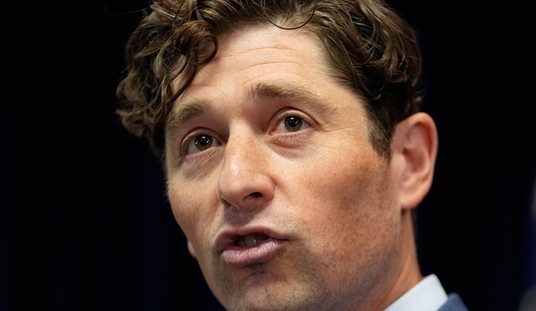Short answer: Yes.
Long answer: Yes, but.
Bethany Mandel of Ricochet is getting some attention online for this Twitter rant today.
This isn’t about greed. It’s survival. People can’t buy food or pay rent or mortgages. Small businesses are closing. Dentists and doctors are going into the red. Schools are going to start closing. This is the destruction of society we’re talking about.
— Bethany S. Mandel (@bethanyshondark) May 6, 2020
We never had ventilator shortages. My local pediatric ER converted to a COVID ward and now sits empty. What are we waiting on here? I’d genuinely like an answer. A vaccine? Because if that’s it, our society will be absolutely wrecked in the meantime.
— Bethany S. Mandel (@bethanyshondark) May 6, 2020
Doesn’t mean it won’t be done responsibly but I am just. I am done. I feel lied to about the terms of this lockdown and I regret ever trusting that it would be done responsibly.
— Bethany S. Mandel (@bethanyshondark) May 6, 2020
I wrote about this last night. I’m fine with ending lockdowns sooner rather than later because I’ve been persuaded by the data I’ve seen in reading over the last few weeks that lockdowns don’t matter much to people’s behavior. Americans were self-isolating in March before most stay-at-home orders were issued. As long as people are being given honest, accurate daily information about the state of the epidemic I’m okay with experimenting by opening businesses back up and having the public act in accordance with its own level of collective risk tolerance. Fling open the doors, then invite national and local public health experts on for TV interviews to give their takes on whether it’s safe yet.
Mandel’s tweets seem to assume a degree of pent-up demand so enormous that most semi-essential retail businesses, not to mention “museums, zoos, restaurants,” will be able to stay afloat. In some places they will, no doubt. But here’s how things went down earlier this week in Texas after Greg Abbott’s lockdown order was finally lifted. If anyone’s going to cowboy up and show that virus who’s boss, it’s Texans, right? Maybe — but not yet.
“I’ve seen one customer today – they didn’t buy anything,” said Taylor Jund, who was keeping watch over an empty Chaser clothing store [at the Domain mall in Austin]. “There’s absolutely no one coming around here.”…
“The cases of coronavirus aren’t really going down, so I suspect people aren’t comfortable going to malls or getting back to normal life,” David Tamayo said while sitting on a shaded bench with his girlfriend at The Domain, where he said they came to relax outdoors…
Christy Armstrong, who works for a food distribution company, made the rounds with her restaurant clients across the Houston area on Monday. During a stop at Arnaldo Richards’ Picos Mexican restaurant in central Houston, she saw a handful of customers sitting at a bar, separated from one another by Plexiglas barriers.
“It’s sad to know that this is the first Monday we’ve reopened, and a lot of the places are still very empty,” Armstrong said. “I’m a little shocked it’s so dead out.”
More people will turn out as time passes. But what’s the plan if daily revenue normalizes at, say, 70 percent of what it was pre-corona and that 70 percent isn’t enough to keep most businesses afloat? Many companies avoided having to pay rent during lockdown. Once lockdown is lifted and the lights are back on, that ends. Maybe some will get a break on rent. Some won’t. And for some who do get one, it won’t be enough.
The lockdowns aren’t ultimately the problem. Public behavior post-lockdown is. And the surest way to encourage more risk-taking by a reluctant public is to give them confidence that the threat of contagion is receding. That was the point of Trump’s federal guidelines (and why Mandel’s complaint about “indefinite lockdowns” is a straw man). Trump’s own administration set benchmarks for reopening local economies measured by meaningful declines in case counts; states that met those benchmarks before reopening would have been able to truthfully claim that the environment was safe enough according to the White House’s best scientific experts to resume commercial activity. That would have released more of that pent-up demand. Maybe businesses would have seen 90 percent of pre-corona revenue, which would have been enough to sustain them.
To put that another way, the best economic plan might be a good epidemiological plan. The latter might be the only thing capable of restoring enough consumer confidence to support the former.
But the guidelines aren’t being closely followed. The impression I get from the “Grandma killer” contingent, as Mandel describes it, is that they’ve concluded the lockdown era has gone on long enough. Why now? As far as I can see, for no better reason than that the calendar flipped from April 30 to May 1. That was that. Deaths and hospitalizations in New York have also declined a lot lately since their peak, but normally the “reopen now” crowd is eager to remind skeptics that most of the country doesn’t look like New York on COVID and shouldn’t operate on NYC’s schedule. That’s true, and the guidelines account for it.
So why would New York’s improvement affect the reopening schedule for the rest of the country?
What I want to know is what happens if the great reopening experiment fails. Let’s say we reopen widely and a second wave starts to crash down. Hospitalizations soar, threatening again to overwhelm capacity. What’s the plan? Maybe we don’t need one. If I’m right that information is driving public behavior then consumers will respond by going to ground, crashing the economy — which would defeat the whole purpose of having reopened early. But what would the “Grandma killer” group *advise* consumers to do in that situation? My sense, as I said last night, is that they’d want consumers to keep shopping no matter the toll. Just stay out there. That’s what Trump’s “warrior” rhetoric is about, right? It’s easy to be a warrior when no one’s shooting at you. Where the men are separated from the boys is when the enemy is unloading and you insist on advancing anyway.
Deaths up 20 percent in your city lately? Be a warrior. March into that Buffalo Wild Wings, pack into a crowded part of the restaurant, order a plate of wings and a pitcher, and engage in good ol’ American commerce. Don’t even wear a mask. Masks are for pussies.
Another way to look at this: If we’re going to reopen arbitrarily, just because April has turned into May, why did we lock down in the first place? We flattened the curve, right — and now we’re being told that it’s time to un-flatten it going forward. Why flatten it to begin with, then? I thought we were going to use the flattening phase to increase testing and develop contact tracing so that the post-lockdown epidemic could be mitigated more effectively, but the “reopen now” group doesn’t seem to care about that.
We could always reopen and choose to isolate just the elderly and vulnerable. But … how? Philip Klein wants to know:
The most obvious way to “isolate” older and more vulnerable people would seem to be to put them in specialized living quarters along the lines of nursing homes. Yet, these homes have been proven to be absolute death traps.
Nursing homes have been the hardest-hit places, with tens of thousands dying as the virus has spread like wildfire among the vulnerable populations there. Nearly 5,000 have died in New York City nursing homes alone. These numbers understate the problem, as they do not account for residents who die in hospitals or who are taken home to die with relatives.
Removing the elderly from these facilities would run counter to the strategy of isolation. If they came home to live with grown children, for instance, they’d be exposed to individuals who would be, under the reopening strategies, participating in society. Also, those who end up in nursing homes are there because they require assistance with daily activities, and they don’t have any family members who can take on the burden of around-the-clock care. Right now, the sandwich generation is grappling with the unprecedented challenge of trying to maintain full-time jobs with schools and childcare closed and all activities canceled. Adding the burden of caring for vulnerable parents will be backbreaking for many families.
All exit and entry at nursing homes could be banned, I suppose, provided we figure out how to build Westworld robots to serve as orderlies to tend to the residents. Failing that, we’d have to ask the younger people who staff nursing homes to live on the premises and never leave.
We only get one shot at a durable reopening, realistically. If we do it too soon and consumers are afraid to shop, or if they come out to shop and then a second wave strikes, the ensuing retreat is going to wreck businesses and make people doubly skeptical of the next reopening attempt. The smart way to do this is to follow the guidelines, focus on building out the testing and contact tracing that literally every public health specialist says we need to proceed safely, and then do it. No one wants or needs “indefinite lockdowns,” and we’re all way past the point of being made “comfortable,” in Mandel’s Trumpishly cavalier words. The “proceed cautiously” crowd, which is a majority of the public per every poll taken over the last several weeks, wants to follow the guidelines. What does the “reopen now” crowd want to do once we have in fact reopened?








Join the conversation as a VIP Member